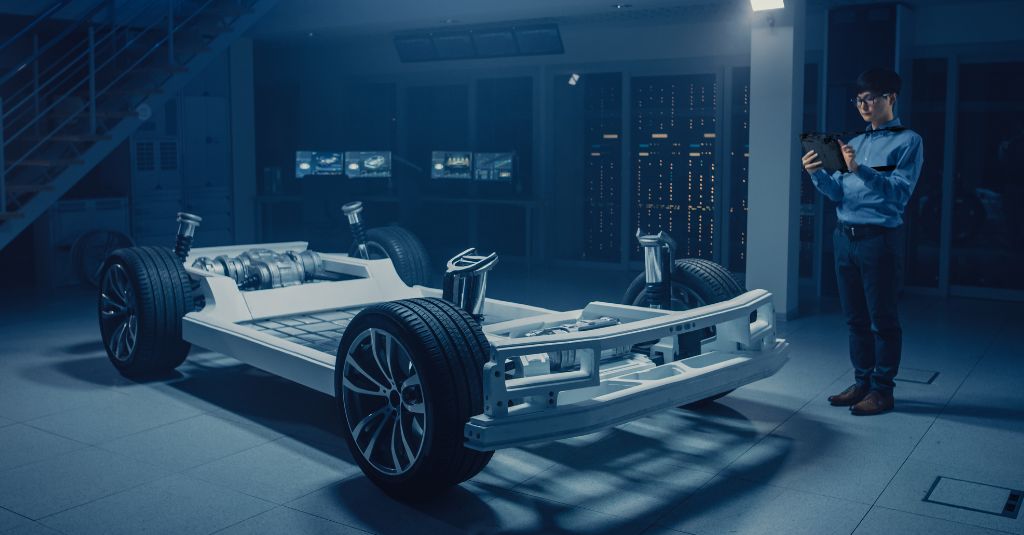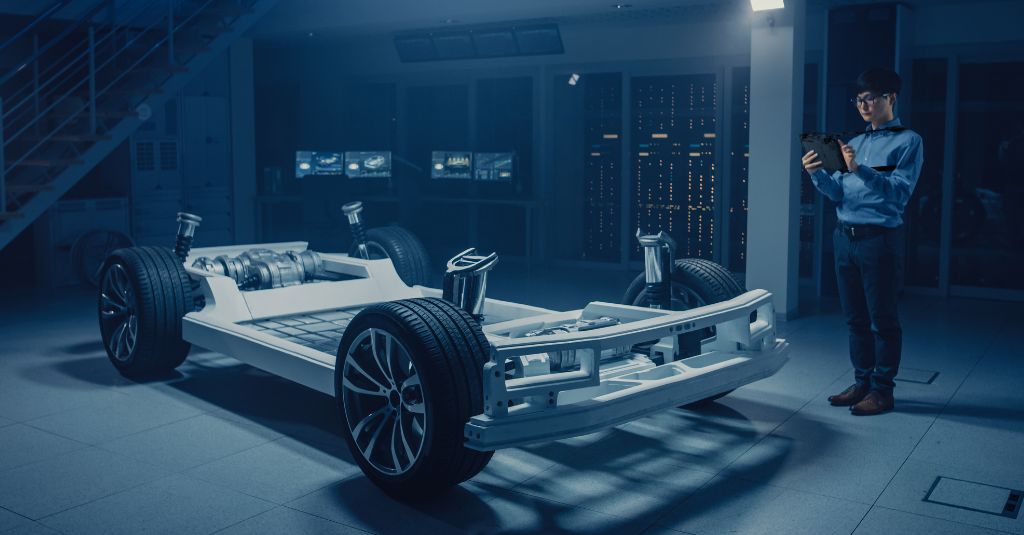What’s Next for AI in Rugged Industries?
As the previous section demonstrates, AI research has the potential to upend the status quo in rugged industries, providing solutions to problems as varied as unpredictable environmental conditions, labor shortages, or supply chain issues. The generative AI market is also evolving rapidly, offering new applications and insights into different AI technologies. While the majority of companies are still only at the beginning of their data journey, with a long way to go in ensuring they are effectively utilizing current AI technologies, it is also important to keep in mind future developments that may further transform the AI landscape for rugged industries.
Edge Computing
The clearest development that will further enable the use of AI in rugged industries is that of edge computing. Put simply, this is the decentralized processing and analyzing of data using equipment close to the source, rather than sending data to a centralized cloud computer. This is beneficial as the scale and complexity of data produced by IoT devices has grown massively, creating delays due to limited bandwidth.
The benefits of edge computing for the use of AI in rugged industries are clear – these industries rely on field work in challenging environments, where sending large amounts of data over a network is impractical or impossible. Edge computing allows AI programs to analyze data in real time at the source, better enabling the previously discussed use cases, such as predictive maintenance and automated robotics.
Sustainability
AI’s role in optimizing the use of resources, extending the lifespan of equipment through predictive maintenance, and using early-warning systems for detecting sustainability risks in supply chains will be vital in ensuring that rugged industries are prepared for the transition to a green and sustainable economy during the 2020s. Of course, the challenging environmental conditions often faced in rugged industries like extreme temperatures, moisture, dust and vibrations may compound sustainability problems by accelerating equipment degradation and resource depletion.
The durability and resilience of rugged devices and sensors on which AI programs rely for data collection and processing in the field become a critical issue. Frequent replacements due to failures can increase e-waste and resource consumption. This is why investments in ruggedized, environmentally hardened technological infrastructure are necessary to enable the AI-driven sustainability improvements that are so essential for these industries to reduce their environmental footprint in the long run.
Ethical Considerations
It’s important to keep in mind the limitations of AI when integrating these technologies into work processes. AI is a powerful tool that can lead to vastly improved business practices, but it can also be subject to some of the same errors and biases that human actors are. AI algorithms must be unbiased and explainable to prevent equipment failures that could endanger the health of workers in these rugged industries. Human oversight over AI is still a powerful corrective to these biases, particularly when AI development teams are suitably diverse and inclusive of people with different roles, backgrounds, and experiences.
The data that is analyzed by AI algorithms must also be handled with the utmost security, ensuring that personal and privileged information is stored securely, ensuring privacy and regulatory compliance. As governance of AI systems is constantly evolving, actors in rugged industries must stay on top of regulatory developments, being leaders in the adoption of best practices and thereby building trust and fostering public confidence.
Conclusion
AI is already transforming the daily work of rugged industries through technologies such as machine learning, computer vision, and automated robotics. The use cases of these technologies provide clear benefits: predictive maintenance can help businesses to minimize downtime of equipment; supply-chain optimization can get products from A to Z faster and with less resource use; and automated monitoring of data from IoT equipment can help to ensure worker safety in even the most challenging work environments. Other advances such as edge computing will further enable the real-time processing of data using AI, while an increasing focus on sustainability will turn AI towards resource optimization and environmental-risk warning systems.
Rugged sectors are an important testing ground for AI, as this revolutionary technology comes up against the challenges of harsh conditions and integration with legacy systems. As enabling factors such as computing infrastructure, data access, and the accessibility of AI technologies to business are scaled during the 2020s, the adoption and innovation of AI in rugged industries will accelerate. Leaders in these industries must prioritize AI adoption to prepare their businesses for a future where technology enables sustainable growth and innovation. Investing in the infrastructure, hardware, and skills needed to harness these technologies is essential to future-proof business in rugged industries in an increasingly AI-driven world. And let’s face it: even though, for these industries AI is not the new kid on the block, we are still at beginning of a very long AI journey, so it’s worth getting started now!





























